Pectineus Muscle Anatomy, Origin, Insertion, Function, Exercise
Table of Contents
Introduction
- The pectineus is a flat muscle found in the superomedial part of the anterior thigh. The fascial part of the thigh muscles is specific in that each of them is innervated by a femoral nerve (L2, L3). Due to having a dual nerve supply, the pectineus is one of a few muscles classified into 2 compartments simultaneously: anterior & medial. The others are adductor longus & adductor Magnus.
- For didactic purposes, the pectineus is usually described together with the 5 muscles of the medial compartment of the thigh. Namely, these muscles are the gracilis, adductor longus, adductor brevis & adductor Magnus. This muscle comprises the functional group of Hip adductors muscle.
- Besides adducting the thigh, the functions of the pectineus consist of the additional movements of thigh flexion, external (lateral) rotation & internal (medial) rotation. Apart from being a prime mover, the pectineus is also a postural muscle as it stabilizes the pelvis & balances the trunk on the lower extremity during walking.
Origin of Pectineus muscle
- pectineal line & adjacent bone of the pelvis
Insertion
- the oblique line extending from the base of the lesser trochanter to linea aspera on the posterior surface of the femur.
Nerve supply :
- The pectineus is predominately supplied by the femoral nerve (L2, L3). However, in some people pectineus may receive innervation from 2 separate nerves of the lumbar plexus.
- This composite innervation reflects the dual compartmentalization of the pectineus into both the anterior & medial compartments of the thigh. In these cases, the anterior part of the muscle sits is supplied by the femoral nerve (L2, L3), a feature of muscles of the anterior thigh. While the posterior, smaller part of the muscle is innervated by a branch of the obturator nerve (L3, L4), the accessory obturator nerve.
Blood supply
- The superficial portion of the muscle is supplied by the medial circumflex femoral artery, a branch of the femoral artery. The deep part of the muscle is vascularised by the anterior branch of the obturator artery, itself a branch of the internal iliac artery.
Function
- Due to the course of its fibers, the pectineus both flexes & adducts the thigh at the hip joint when it contracts. When the lower limb is in the anatomical position, contraction of the muscle first causes flexion to happen at the hip joint. This flexion can go as far as the thigh at a 45-degree angle to the hip joint.
- At that point, the angulation of the fibers is such that the contracted muscle fibers pull the thigh towards the midline, producing thigh adduction. An example of a sequential movement that involves both actions of the pectineus muscle is crossing your legs at the knee or ankle. Hip flexion solely is an action that, in synergy with the psoas major, iliacus, rectus femoris & sartorius, enables the carry-through phase of the gait cycle.
- Some sources also state that the pectineus muscle contributes to external & internal rotation of the thigh. This is still heavily debated, although it is noted that the insertion of the pectineus is lateral to the midline, beyond the mechanical axis of rotation of the femur, suggesting that there might be some merit to the argument.
- Besides being the prime mover, this muscle is also important to stabilizer the pelvis. In fact, it is suggested that all the muscles attaching between the pelvis & proximal femur act as adaptable ligaments of the hip joint, preserving its integrity during body movements.
Structure
- The pectineus muscle arises from the pectineal line of the pubis & to a slight extent from the surface of the bone in front of it, between the iliopectineal eminence & pubic tubercle, and from the fascia covering the anterior surface of the muscle; the fibers pass downward, backward, & lateral, to be inserted into the pectineal line of the femur which conducts from the lesser trochanter to the linea Aspera.
Relations
- The muscle lies in the same plane as, & medially to, the adductor longus. While laterally, it is related to the psoas major muscle & the medial circumflex femoral artery & vein.
- The anterior surface of the pectineus forms the medial part of the floor of the femoral triangle together with the adductor longus, while the iliacus & psoas major complete the lateral side of the ground. This surface of the pectineus is covered with the deep layer of fascia lata that separates it from the femoral artery, femoral vein & great saphenous vein that course through the femoral triangle.
- Posterior to pectineus are the adductor magnus, adductor brevis & obturator externus muscles, & the anterior branch of obturator nerve. The fascia lata peripherally bounds the anterior & posterior thigh compartments. These 2 are internally separated by medial & lateral intermuscular septa that attach to the femur. Although the adductor (medial) compartment to which the pectineus belongs does not have its own fascial border to separate it from the anterior & posterior compartments, it is still described separately due to the common function & muscular innervation of its constituents.
Clinical importance
Pectineus muscle strain
- The most general symptoms of an injured pectineus muscle are pain, bruising, swelling, tenderness,& stiffness. Pain in the front hip site can mean that you may have strained the primary hip flexor muscles or the hip adductor muscles, or a combination of the two.
- When overstretched, a pectineus strain is possible. Pectineus pain can be caused in several ways:
- Changing directions suddenly or fastly
- Having legs crossed for extended periods of the time
- Fast movements from kicking or sprinting
- Overstretching a leg or both legs to the side of the body
- Striding too long during running or power walking
- Exercising with exertion after the pectineus muscle is the already fatigued legs splint/cast, foot/ankle problems, sudden overload due to gymnastics, football/ice skating injury, horse riding, skiing, cross-legged sitting, leg length discrepancy. Persistent “internal” groin pain, groin strain, hip pain, post-hip-replacement rehabilitation, post-hip fracture, pregnancy, postpartum, pain during sexual intercourse/ hip adduction exercises (gym), osteoarthritis of the hip.
- Due to the attachment of the pubis and the femur on the medial (or middle) part of the thigh, the straining of the groin muscles can cause soreness & pain in the entire portion on the inside of the thigh. Soreness from the tendon or muscle at the top or superior end of the muscle will be situated at the very top of the inner thigh near the pubic region. Soreness from the tendon or muscle at the bottom or inferior end of the muscle will be situated down the side of and deeper into the thigh.
- Once injured, the pain will result from lifting the thigh straight out in front of the body. Pain will also be felt as the groin muscles are stressed as the thighs are widened outward.
- The pectineus muscle can be injured by overstretching; specifically, by stretching a leg or legs too far out to the side or front of the body. Pectineus injuries can also be caused by rapid movements like kicking or sprinting, changing directions too fastly while running, or even sitting with a leg crossed for too long.
Pectineus muscle stretching exercise
- The pectineus involves the inner leg muscles, called the groin. The pectineus muscle stretch will include the group of muscles that has a significantly large muscle mass. The key action of these muscles is to pull the leg inward. There is more useful for them in sports such as soccer, where these muscles are used s muscle in kicking a soccer ball with the inside of the foot. Finally, they are utilized in flexion & extension of the thigh when against resistance or running.
- Lunge Stretch
- Standing Lateral Lunge Stretch
- Butterfly Stretch
- Supine Wall Stretch
- Kneeling adductor stretch
- Frogger stretch
- Lateral squat
- Crossover stretch
- Reclining angle bound pose
- Standing banded adduction
- Hip Opener and Groin Stretch
- Squatting Groin Stretch
- Frog Squat With Arm Raise
- Runner’s Lunge
- Lunge Stretch

How to perform stretch:
- Begin kneeling on the ground in a lunge position.
- Bend your torso forward to bring the outside of the shoulder towards the interior of the lead knee.
- Then, lunge forward so the hips slide forward.
- You can feel a stretch along the inside of the forwarding leg.
- Hold this adductor stretch for 5- 10 seconds then release.
- Perform 10-12 repetitions.
- Standing Lateral Lunge Stretch
How to perform stretch:
- Stand in a broad stance position.
- Now bend your & knee & move your hips to that side.
- maintain posterior pelvic tilt during the stretch
- You can feel stretch inside of the opposite thigh.
- Hold for 5-10 seconds & release.
- You can enhance holding time in progression.
- Do this adductor stretch 4-5 times.
- Butterfly Stretch

How to perform stretch:
- Sit down on the ground with your legs in front of you.
- Reach forward & grab your left foot.
- You can bend the knee to help the hand & foot join.
- Slowly pull your left foot up towards the groin bending until it is at a comfortable place & the sole is facing your right thigh.
- Bend your right knee to bring your right foot toward the groin so that it is sole touches the sole of your left foot.
- Hold both feet with your hands & place your elbows on the knees.
- While maintaining the back straight, allow your knees to fall towards the ground.
- You can give gentle pressure to the inner thigh by pressing gradually on the knees with the elbows.
- You might feel pulling & tension in your groin.
- Hold the butterfly stretch for 20-30 seconds.
- Release & repeat 2-3 times.
4. Supine Wall Stretch
How to perform stretch:
- In the supine position in front of a wall with the leg up on the wall.
- move towards the wall as you can, and maintain the comfortable stretch in the hamstrings.
- Maintain the leg straight while they slowly split open until you feel a stretch inner side of the legs.
- Hold the stretch for 15-30 seconds.
- Relax & repeat 3 times.
5. Kneeling stretch

How to perform stretch:
- Begin with your knees & hands on the ground.
- Straighten out a left leg to the side. Try to keep the leg on the floor.
- Move your butt back to the heel of your right bent knee.
- You can feel the stretch on the inner thigh of the left leg.
- Pause for 8-10 seconds, then release the stretch & back in.
- Repeat 8-10 times.
6. Frogger stretch

How to perform the stretch
- Start with your knees & forearms on the ground with your knees & feet wider.
- Try to keep the inner part of your feet on the floor.
- Sit the butt back to the heels, feeling the stretch on the inner thighs.
- Pause for 10-15 seconds, then release the stretch & back in.
- Repeat 8-10 times.
7. Lateral squat
How to perform stretch:
- Stand tall & put the feet double shoulder-width apart.
- Transfer your weight to your left leg, bend your left knee, & push your hips back as if you are taking a sitting position.
- Drop as low as possible while keeping your right leg straight.
- Keep the chest up & your weight on the left leg.
- Breathe & hold for 15 to 20 seconds prior to returning to the beginning position.
- Repeat 2-3 times, then move to the other side.
8. Crossover stretch
How to perform stretch:
- Start with the feet together, then step to the right with the right foot.
- Cross your both foot.
- Step to the right again with your right foot, & bring your left foot to join your right foot.
- Once both the feet are together and repeat on the opposite side.
- You can start gradually, but pick up the stride as you get used to the move.
- Do it 5-10 times.
9. Reclining angle bound pose
This is the best stretch if you spend most of the day in a sitting position.
How to perform stretch:
- Take a supine position on the ground.
- Bend both knees & draw your soles inward so that their borders are touching each other.
- Move the knees down toward the floor so that you can feel the groin muscles stretching.
- Breathe & hold this position for 15- 30 seconds.
- Repeat 3-4 times. Try to draw the feet closer to the buttocks with every stretch.
10. Squatting Groin Stretch
How to perform stretch:
- Take a standing position with the feet wide apart, toes pointing outwards.
- Slowly start squatting down until your knees are directly over the ankles & bend to 90 degrees.
- Put your hands on top of your inner thighs & gently push outward to open the hips.
- You will feel a stretch in the inner side of each leg.
- Hold for 20 – 30 seconds, relax & repeat 3 times.
11. Hip Opener and Groin Stretch
How to perform stretch:
- Begin in a forward lunge position & drop your right knee to the floor.
- Place the left elbow on the inside of your left knee as pictured.
- Press the left elbow gently into your left knee & twist your torso to the right.
- Reach the right arm behind you until you feel a gentle stretch in the lower back & left groin.
- Hold the stretch for about 20-30 seconds, release & repeat on the right leg
12. Squatting Groin Stretch
How to perform stretch:
- Take a standing position with the feet wide apart, toes pointing outwards.
- Slowly start squatting down until your knees are directly over the ankles & bend to 90 degrees.
- Put your hands on top of your inner thighs & gently push outward to open the hips.
- You will feel the stretch in the inner side of each leg.
- Hold for 20 – 30 seconds, relax & repeat 3 times.
13. Frog Squat With Arm Raise
How to perform stretch:
- Moving directly from the first stretch, place the right hand on the ground.
- Continue to gradually push your inner thigh outward, as you reach the left hand directly up to the roof, fingers pointed upward.
- With each breath, twist the upper body slightly further, reaching as high as you can.
- Your right heel might lift slightly.
- Then, switch the other sides.
14. Runner’s Lunge
How to perform stretch:
- Get on all fours, facing the front of the mat.
- Plant the fingertips gently into the floor as you extend your right leg behind you, maintaining the knee rested or lifted slightly.
- Press the right heel toward the back of the room.
- Bring the left foot forward so it is in line with your left hand.
- Maintain your head upwards.
- Inhale & exhale, driving the hips further into the ground with each breath.
- Then, move to the other sides.
Pectineus Muscle Strengthening Exercises.
- Standing Leg Circles
- Side-Lying Hip Adduction
- Squat Side Kick
- Standing side Leg Raise
- Sumo Squat
- Cross Scissors
- Dumbbell Side Lunge
- . Cossack Squat
- Copenhagen Side Plank
- Wide stance squat
- Standing banded adduction
- Seated banded adduction
- Lateral lunge
- Standing Leg Circles
How to do it?
- This is the dynamic warm-up exercise, this exercise improves blood circulation to the hip muscle & upper leg.
- for standing leg circle exercise, stand with feet hip-width apart.
- Raise the left leg off the floor. while balancing on the right leg, make a small circle with your left leg.
- Complete 10 to 20 repetitions on the left side then change to the right leg.
- Note: If you have a balance problem then stand close to a prop where you can help to maintain your body by holding something.
2. Side-Lying Hip Adduction

How to do it?
- This is the best exercise for the hip adductors that can be done on the ground while isolating a single leg at a time.
- All you need to do is to focus on contracting the hip adductor muscles to raise your leg off the floor.
- For this exercise, you have to lie down on your left side and take your arms in front of you with your elbows & forearm on the floor for support. raise the right leg over your lower leg placing your heels against the thigh of your bottom leg.
- maintain your leg extended, and raise it upward as much as possible.
- Slowly return to the starting position.
- Do 10-25 repetitions on the left side then move to the right leg.
- Note: You can add some provocation to your exercise by using a resistance band attached to an anchor or by strapping an ankle weight to the leg.
3. Squat Side Kick

How to do it?
- The squat side kick bodyweight exercise will utilize both the adductors & the abductors & is a great all-around lower limb exercise.
- This exercise combines 2 movements that enable both muscle strengthening & stretching which is important to decrease the risk of suffering from groin pain.
- For the Squat Side Kick exercise, you have to stand with a shoulder hip-width apart, and your hands are together in front of you.
- Flexed your knees until your thighs are parallel to the floor, then stand up & transfer your weight to your right leg while kicking out the left leg to the side.
- Back to squatting position then repeat it on another leg.
- Note: Your core muscles might be engaged throughout the movement with your back straight, chest up, & do not let your knees extend past your toes while squatting.
4. Standing side Leg Raise

How to do it?
- This is the best bodyweight exercise that can hit the hip adductors of one leg while hitting the hip abductors of the other leg as
- you will be using an isometric hold on your other leg to maintain it in the air.
- For this exercise, you have to stand with shoulders hip-width apart. now on the left leg away from the body.
- Then Lift the right leg as far as comfortable, & hold it there for 4-6 seconds.
- Raise your left leg to your right leg until they touch then lower back to the starting position. Complete 10-18 repetitions of 2-3 sets.
- Note: To make this exercise more challenging strap ankle weights to both legs.
5. Sumo Squat
How to do it?
- This variation of the squatting will hit the muscle groups in the lower limb plus the inner thighs.
- Maintain your back straight & your chest up throughout the exercise.
- Even though the sumo squat has a smaller range of motion compared with a regular squat, it is still an effective exercise that can be incorporated into normal workouts.
- For this exercise, you have to stand wider than the shoulder-width stance with your pointing outside.
- Take a squatting position, drop your hip down & back while your back is straight & chest up until your thighs are parallel to the ground.
- Push off through the ground and return to the starting position.
- Note: If you want to add some provocation to your exercise then hold a kettlebell in your hand.
6. Cross Scissors
How to do it?
- This is the best exercise to work hip adductor muscles & the core muscle simultaneously.
- Cross scissors are challenging as you require to stay in a crunched position throughout the movement.
- Maintain this position by crossing your legs in front of you need all your stabilizing muscles to be contracted.
- For this exercise, you have to Sit down & brace yourself by putting your hands on the floor back to you. move your leg off the ground in front of you at a 30-40-degree angle with one leg crossed over the other.
- Your core muscle might be engaged throughout the movement in a semi-“V” position change your legs out to the sides then bring them back closed while crossing the other leg over.
- Do this with an Alternate leg until you complete 10-20 repetitions on each side.
- Note: You can enhance the difficulty of cross scissors by sitting in a “V” position without bracing the upper limb with your arms.
7. Dumbbell Side Lunge
How to do it?
- The side lunge is an excellent exercise to improve your balance, stability, & lower limb strength.
- The side-to-side movement is both a strengthening & stretching exercise. Dumbbell Side Lunge exercise utilizes your hip abductors & hip adductor muscles.
- For this exercise, you have to stand with shoulder hip-width apart & hold the dumbbells at your chest level.
- Take a large step to your side & drop your hip down & back until your thighs are parallel to the floor while your foot is planted on the ground.
- Push through your flexed foot, & bring your back to the initial position.
- Repeat it for 10-15 repetitions then move to the next leg.
- Note: To make this exercise easy you can do bodyweight side lunges. your back might be in a neutral position & chest up while trying not to lean forward.
8. Cossack Squat
How to do it?
- Cossack Squat exercise moves the body through the frontal plane of motion, going side to side.
- Working lower limb at this angle can improve the flexibility of hips, knees, & ankles.
- You will increase your stability by mastering this exercise by getting a good stretch & strengthening the hip adductors.
- For this exercise, you have to stand with feet in a wide stance with toes pointing outside by dropping your hips downward & back.
- Squat down to that single side and shift your weight while your other leg is extended out with your heels on the floor, toes pointing up.
- Push through the ground with your flexed leg and bring your back to starting position.
- Repeat this exercise on the other leg by shifting the weight & lowering it down into a squat position on the other side.
- Note: Cossack Squat exercise requires a high degree of mobility so if you can not go all the way down then go as far as you can while trying to improve each workout. your back might be maintained in a neutral position throughout the exercise
- Copenhagen Side Plank
How to do it?
- Copenhagen Side Plank exercise is the most difficult variation of plank that not only hits the core muscles but also strengthens the hip adductors. Copenhagen Side Plank exercise will help to balance out the strength in the muscles on the outside of the hip.
- For this exercise, you have to lie down on the floor & perpendicular to the bench then brace yourself on your forearm & elbows.
- Lift with your flexed knee lift your top leg & place it on the bench.
- Hold this position.
- Complete 20-25 repetitions for 2 sets then do this on another side.
- Note: Increase the difficulty by doing this exercise with legs extended with only your ankle placed on the bench.
10. Wide stance squat
How to do it?
- Squatting is a king of leg exercises & this will stimulate the whole leg.
- There have different squat variations but here we discuss the wide stance squat also called sumo squat which will utilize inner thigh muscles.
- You can do this exercise with a variety of weighted equipment like a barbell, kettlebell, dumbbell, or sandbag — or with just only body weight.
- For the Wide stance squat exercise, you have to stand a little wider than the shoulder hip-width apart, and turn your toes outside.
- Shift your weight backward & slowly lower your hips until your thighs are parallel to the ground.
- Then return to the starting position by pushing through the ground, and your inner thigh muscles are contracted.
- Do 10-15 repetitions of 2-3 sets.
11. Standing banded adduction
How to do it?
- For this exercise, you need a resistance band, and wrap a resistance band on a solid anchor. you have to stand on either side of the body facing the anchor point & the resistance band.
- Allow the resistance band to pull the leg to the side by resisting the movement.
- To start this exercise you have to stand tall & bring a banded leg towards the midline of the body, you feel the good contraction in your inner thighs.
- Gradually release your leg back to the side with control movement.
- Switch the legs & do 10 to 20 repetitions for 3 to 4 sets on each leg.
12. Seated banded adduction
How to do it?
- For the Seated banded adduction exercise you need a resistance band, and wrap a resistance band on a solid anchor.
- You have to sit on the bench on either side of your body facing the anchor point & the resistance band.
- Put the internal foot through the resistance band, the band is positioned just below the knee joint. allow the resistance band to pull the leg towards the anchor point.
- Move your leg towards the center of the body by contracting the adductor muscle.
- Repeat this on each leg.
- Do 2-3 sets of 12-15 repetitions.
13. Lateral lunge

How to do it?
- For the Lateral lunge exercise, you have to stand with feet hip-width apart. step out of your left leg & start with sending your hip back as you flex your left knee.
- You can extend your arms forward for counterbalance if you like. during the descent, the knee should not move more than 2 inches beyond your toes, &your knee should be aligned between 2 & 3 toes.
- The toe turns outwards slightly. push-off through left to return to a starting position.
- Repeat on the right side leg to complete the 1st repetitions.
- Do 3 to4 sets of 8 to 10 repetitions on each leg.
When did you not do this exercise?
- If your health care provider advised to you take a rest.
- If you are already suffering from back & knee pain.
- If your lower limb bone recently fractured.
- If you feel pain during this exercise.

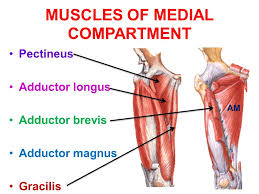

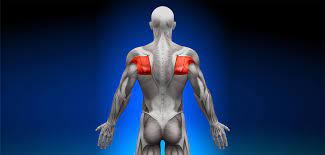
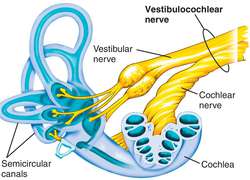
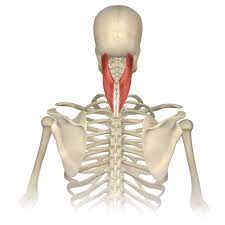
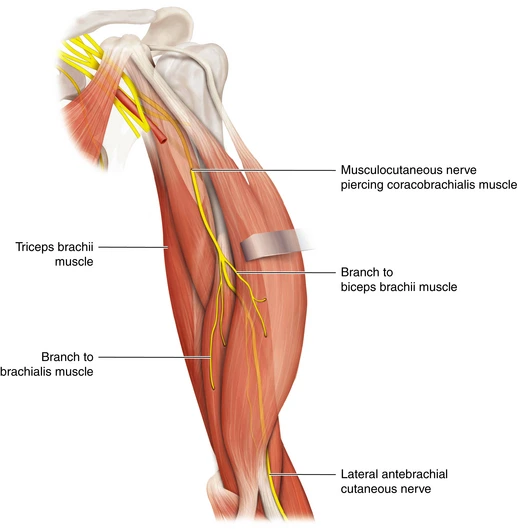
2 Comments